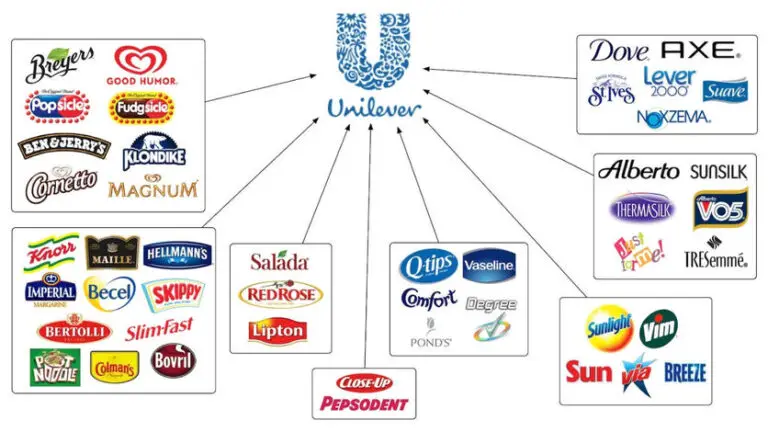Embracing a multi-branding strategy has become imperative in the ever-changing landscape of the business world. Companies no longer thrive solely on a singular line of products or services; instead, they adapt to the evolving market demands and consumer expectations.
In this dynamic environment, where manufacturing options are abundant, consumers are discerning, and businesses are consolidating, multi-branding has emerged as an attractive option. It allows businesses to diversify their offerings, tap into new customer segments, and enhance revenue streams. When implemented effectively, this approach has the potential to transform a modest organization into a global corporate powerhouse.
In this blog post, we delve into the concept of multi-branding, exploring its nuances and weighing the advantages and disadvantages inherent in adopting this versatile brand identity structure.
What is Multibranding
Multibranding, sometimes referred to as flanker branding, is a strategic approach employed by established brands. This strategy involves introducing another brand within the same category where the parent brand already operates. Essentially, multibranding is about expanding market appeal by catering to specific customer segments or categories that the original brand might not fully address.
The Need for Multibranding Strategy
In any given market category, there’s a limit to the number of customers a single brand can serve. Every brand has its unique appeal, but there are always segments within the market that the brand might not effectively reach. Multibranding becomes crucial here, as it allows companies to increase their market share by targeting these specific, underserved audiences with distinct products or services under different brand names.
The Benefits of Multibranding
By adopting a multibranding strategy, brands can significantly enhance their market presence. The approach involves creating separate but related products that cater to different target groups within the same overarching market. For instance, consider a hypothetical company owning both Coca-Cola and Pepsi. Although both products essentially serve the same purpose, they resonate with different consumer segments.
This strategic diversification can lead to a substantial boost in market share. Instead of relying on a single brand, the parent company can effectively capture various market segments, ensuring they appeal to a broader range of customers. Ultimately, multibranding offers a pathway for brands to strategically expand their reach, increasing their influence and market penetration by meeting the specific needs and desires of diverse customer groups.
The essence of a multibranding strategy lies in expanding market presence and reaching a wider audience. Introducing a new brand enables a company to engage with fresh audiences and customers, leading to several advantages:
- Increased Market Share and Audience Reach: Multibranding allows a company to capture a larger market share by appealing to diverse customer segments.
- Diversified Product Offerings: This strategy facilitates diversification in product offerings, enabling targeted marketing campaigns tailored to specific consumer needs.
- Expanded Range of Products, Services, or Experiences: By introducing multiple brands, a company can offer a variety of products, services, or experiences, meeting the diverse preferences of consumers.
Multibranding Examples
Let’s delve into real-world examples to deepen our comprehension of the multibranding strategy, shedding light on how major global brands employ this approach to their advantage.
Procter and Gamble
Procter and Gamble, a conglomerate housing multiple brands, boasts Tide laundry detergent as one of its leading products. Tide has established itself as an incredibly successful brand, commanding a substantial market share in the laundry detergent category. However, Procter and Gamble recognized that there existed a segment of the consumer base who found Tide’s pricing to be beyond their budgetary constraints.
To address this issue and tap into an underserved market segment, Procter and Gamble introduced another brand within the same category: Cheer. Cheer was positioned as a more affordable alternative with slightly lower quality than Tide, catering specifically to budget-conscious consumers. By offering this budget-friendly option, Procter and Gamble successfully appealed to a segment of the audience that sought a more economical choice in the market.
Although Tide initially experienced a minor decline in market share due to the introduction of Cheer, the overall market share for Procter and Gamble increased significantly. This strategic use of multibranding resulted in a larger market presence for the company, demonstrating the effectiveness of this approach in capturing diverse consumer segments and maximizing overall market reach.
Toyota’s Multibranding Success Story
Toyota, a well-known brand in the market for producing reliable mid-range cars, aimed to expand its market presence by introducing a touch of luxury. However, they recognized that associating luxury with the existing Toyota brand might not be effective due to its established reputation for reliability in the mid-range category.
To bridge this gap, Toyota employed a multibranding strategy by launching the brand Lexus. By creating a separate brand identity, Toyota was able to position Lexus as their luxury line, distinct from the reliable mid-range image of Toyota cars. This strategic move allowed Toyota to enter the luxury car market without diluting its existing brand image.
The introduction of Lexus not only enabled Toyota to tap into the luxury market segment but also allowed them to diversify their offerings, catering to a broader audience. This multibranding approach resulted in an increase in Toyota’s overall market share and enhanced its ability to provide luxury options to a wider customer base, showcasing the effectiveness of strategic multibranding in expanding a brand’s reach and appeal.
Multiproduct Branding vs. multibranding
Multi-product branding and multibranding are two different branding strategies used by companies to market their products. Here’s an explanation of each:
Multi-product branding:
-
- In multi-product branding, a company markets several different products under the same brand name. These products might be related or unrelated, but they share the same brand identity.
- The advantage of multi-product branding is that it allows companies to leverage the brand equity they have built with one product to promote other products. This can lead to cost savings in marketing and advertising efforts.
- Example: Samsung, sells a wide range of products including smartphones, TVs, refrigerators, and washing machines, all under the Samsung brand.
Multibranding:
-
- Multibranding involves a company marketing multiple products under different brand names. Each brand targets a specific market segment or consumer group, and the products may or may not be related.
- The advantage of multibranding is that it allows companies to target different segments of the market more precisely and avoid cannibalization between products.
- Example: Procter & Gamble, which owns numerous brands such as Tide, Pampers, Gillette, and Pantene, each catering to a different market segment or product category.
Guidelines for Developing a Successful Multi-Brand Strategy
Embarking on a multi-brand strategy requires careful planning and execution. Here are some steps to consider in creating an effective multi-brand approach:
Assess Your Resources:
Before diving into a multi-brand strategy, evaluate your available resources in terms of time, effort, and financial investment. Ensure you have the capacity to effectively market and manage separate brands. For new businesses, focusing on establishing and nurturing customer loyalty with a single brand may be a prudent initial step.
Establish Clear Goals:
Define specific objectives for your multi-brand strategy to guide your efforts and measure success. Having well-defined goals ensures that your marketing initiatives remain focused and results-oriented throughout the process.
Define Brand Values:
Customers are drawn to brands with clear principles and values. Develop a mission statement for each brand, articulating its purpose and values. Whether it’s supporting communities or advocating for environmental conservation, aligning with meaningful causes can attract and retain customers.
Prioritize Transparency:
Maintain transparency across all brands within your multi-brand strategy. Provide honest information about each product’s features and ingredients to build trust with consumers. Transparency fosters credibility and strengthens customer relationships.
Highlight Brand Differentiation:
With multiple brands under your umbrella, emphasize the unique qualities and benefits of each. Clearly communicate what sets each brand apart and its specific value proposition to customers. Highlighting brand differentiation helps prevent confusion and ensures that each brand resonates with its target audience.
Develop Brand Identity:
Craft a distinct identity for each brand through consistent branding elements such as logos, social media presence, business collateral, and signage. Investing in cohesive brand visuals helps establish brand recognition and legitimacy, minimizing confusion among consumers.
Conduct Competitor Analysis:
Perform a comprehensive analysis of your competitors, both current and potential, to identify strengths, weaknesses, and market opportunities. Understanding competitive dynamics enables you to anticipate challenges and devise strategies to overcome them effectively.
By following these strategic steps, businesses can develop a multi-brand approach that maximizes market presence and resonates with diverse customer segments.
Challenges of a Multibranding Strategy
While multibranding offers significant advantages, it comes with its share of challenges and uncertainties, including the risk of brand cannibalization, where the new brand competes with the existing one. Other disadvantages include:
- Brand Cannibalization and Dilution: There’s a risk of weakening the original brand by introducing a new one, leading to brand dilution and potential customer confusion.
- Competition between Brands: The two brands might end up competing against each other instead of complementing each other’s strengths, causing internal conflict.
- Consumer Confusion: Introducing multiple brands can confuse consumers about which products to choose and the relationships between the brands, leading to decision-making challenges.
Final Thoughts
The multibranding strategy underscores the importance of understanding your audience and market thoroughly. Even if you have an established brand, there might be overlooked segments of your audience with unmet needs. Recognizing these unmet needs as opportunities is crucial. A proper understanding of brand architecture and thoughtful structuring of brands can help companies seize market opportunities effectively, ensuring strategic growth and market expansion.






![What is a Brand Promise? [Strategies + Examples]](https://naumandigital.com/wp-content/uploads/2023/10/business-people-shaking-hands-in-agreement-600x400.jpg)
![What Is An Endorsed Brand [Examples, Benefits & Disadvantages]](https://naumandigital.com/wp-content/uploads/2023/02/20-600x400.jpg)

